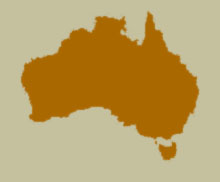Synonyms
Brumoides piae Slipinski and Giorgi, 2006: 268.
Diagnosis
This species differs from B. maculatus by its smaller size, simple tarsal claws and joined lateral maculae on elytra.
Description
Length 2.5-2.7 mm. Dorsal surface predominantly yellowish; head dark brownish around the eyes; each elytron with brownish sutural band, sometimes expanded laterally at apex and base; a second longitudinal brownish band running medially, not reaching any margin, distinctly expanded before its apex; meso-, metepimeron, meso-, metepisternum, meso-, metasternum, femora and abdominal ventrites (except the last one) usually dark brownish; the rest yellowish. Body slightly elongate oval and flattened; dorsal surface glabrous. Head flat between eyes; polished to weakly micro reticulate between punctures. Eyes dorsally separated by about 3 times the width of an eye; inner ocular margin conspicuously diverging apically. Antenna with scape symmetrical, slightly larger at apex; pedicel somewhat barrel-shaped, about as long as scape; antennomeres 3 and 4 very similar in size and shape, somewhat trapezoidal; 5th 1.5 times as long as 4th; 6th 1.5 times as long as 5th; 7th somewhat conical in lateral view, slightly shorter than 6th; 8th completely embedded in 7th. Terminal maxillary palpomere with sides nearly parallel (Fig. 60); terminal labial palpomere elongate, about 3 times as long as basal width; slightly shorter than preceding segment. Pronotal surface sculptured as on head; punctation smaller than eye facets, nearly 2 to 3 diameters apart; prosternum relatively short in front of coxae, about 1.5 times longer than prosternal process widest width; tarsal claws simple. Elytral surface as on pronotum; punctation weaker than on pronotum, slightly shallower and sparser; epipleura gradually narrowing towards the apex. Abdomen with ventrite 6 truncate at apex; surface of ventrite 1 polished between postcoxal lines.
Male
Tegmen relatively short, about 1/2 the abdomen length; penis guide distinctly shorter than parameres; parameres densely setose at apex, the setae long; strut long, about 1.5 longer than tegmen; penis as figured.
Female
Externally identical to male.
Variation
Not observed.
 Distribution and Biology
Distribution and Biology
This species has been found along the coastal salt marsh habitats in New South Wales and Queensland.
Species References
Slipinski, S.A. 2007. Australian Ladybird Beetles (Coleoptera: Coccinellidae) their biology and classification. ABRS, Canberra. 286 pp.
Slipinski, A. and Giorgi, J.A. 2006. Revision of the Australian Coccinellidae (Coccinellidae). Part 6. Tribe Chilocorini. Annales Zoologici (Warszawa), 56(2): 265-304.
[ Top ]
